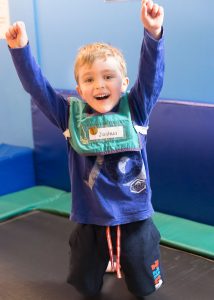Dr Jane Williams

Do you know that, on average, 22% of children in Australia arrive at school with developmental vulnerabilities that have a direct effect on how well they will learn?
In some school districts the percentage is as high as 48%, and others as low as 18%, but it is notable that ALL areas have children who are not ready for learning the day they start school. Boys have higher levels of developmental vulnerabilities (28%) than girls (15%). These percentages have not really changed in nine years and in some areas of development have declined (AEDC, 2016).
Why does this matter? Surely they will catch up?
Unfortunately, not so. Almost all children who start school behind, don’t catch up (Brinkman, 2013). You can see this reflected in the 2009 AEDC assessment, where 23.6% of children are vulnerable in more than one domain of development, and the same group of children, when tested for literacy and numeracy in Year 9, still have 20% functioning at minimum baseline or lower (NAPLAN, 2016).
And the response from schools to address this massive problem? More buildings. More money. More technology. The push-down of literacy and numeracy learning to the lowest Year levels. But nothing is working.
I just want to say here, that this is not the teachers fault! Children are arriving at school neurologically immature and not ready for the challenges of harder learning – reading, writing and maths. The current curriculum does not allow for teachers to address the underlying neurological issues, instead it tries to build literacy and numeracy tasks on a neural foundation that is less than ready for learning.
The only way to resolve this is through exposing children to activities that enable those immature brain pathways to mature, and the only way to do that is through movement. Not just any movement – movement that focuses on the development of motor skills (Willoughby, 2018).
Ok, but why would motor skill development have an effect on academic ability?
At the recent Movement and Cognition conference held at Harvard University Medical School, experts in the field of learning and movement demonstrated that motor skills really matter to how well children can learn, think and behave.
Movement is the key to learning and is fundamental to everything we do. When movement opportunities are reduced, the brains opportunity to learn and function to its potential capacity is also reduced (Melillo, 2018). Children need to move to develop their motor skills.
Motor skill development is sequential, building from the day a baby is born. It’s a step by step process as the brain matures and develops motor message pathways from the bottom up. Higher level development builds on lower level development. Higher level adaptation is more difficult if the lower levels have been compromised – ‘skill begets skill’. (Perry, 2000).
Basically, the brain needs the first skill to be practised, remembered and then automatically occurring before the next motor skill can develop effectively. Alongside the development of motor skills, other key areas of brain development are being stimulated and readied for the challenge of academic learning. When you have good control of your body you can balance, coordinate and time movements almost exactly. This means you can control your pencil, sit still in your chair at school and attend to the task at hand, as you are not distracted by a body that does not do what you want it to do!
Movement is also very closely tied in with behaviour and the development of emotional systems in the brain. It affects executive function – the ability to plan, organise and complete tasks as well as regulate emotional responses. Children who have poor executive functioning skills struggle to cope with the everyday challenges of the classroom, the playground and of academic learning.
So how can you help your child be ready for school?
- Be active. Particularly focus on motor skills. Is your two-year-old jumping, your three-year-old hopping, your four-year-old marching and your five-year-old skipping along? If not, work out at what level the motor skills are, go back to that level and practise! Don’t forget to make it fun so your child is motivated to continue practising. You need to look like you are having fun too!
- Practise, practise, practise! Until that motor skill is refined, and only then, move onto the next level, (your child will most likely do this by themselves). If you are attending a GymbaROO centre, the home play activities are designed to help provide you with lots of activity ideas that you can do every day.
- Motor skill development is enhanced by stimulating the sensory systems – touch, balance, hearing and vision. These systems tell your child’s brain and body where it is in relation to other body parts and the space in the room etc. Play games that are fun and that stimulate the senses, e.g.; touch a body part and ask your child to lift it; balance in different positions – like a tree, a bird flying, a teapot pouring, etc.
References:
Brinkman, S., Gregory, T., Harris, J., Hart, B., Blackmore, S. & Janus, M. (2013). Associations between the Early Development Instrument at age 5, and reading and numeracy skills at ages 8, 10 and 12: a prospective linked data study. Child Indicators Research, 6(1) DOI: 10.1007/s12187-013-9189-3.
Melillo, R (2018). Parallels in brainstem, motor and autonomic development and their relationship to hemispheric integrative function. Presentation at the Movement and Cognition Conference at the Joseph B Martin conference centre, Harvard medical School, Boston.
Perry, B. (2000). Principles of neurodevelopment: an overview; a Child Trauma Academy Presentation Series 1, No. 2, www.ChildTrauma.org
Willoughby, M. (2018). Motor proficiency – not moderate to vigorous physical activity – is related to executive function skills in early childhood. Presentation at the Movement and Cognition Conference at the Joseph B Martin conference centre, Harvard medical School, Boston.

